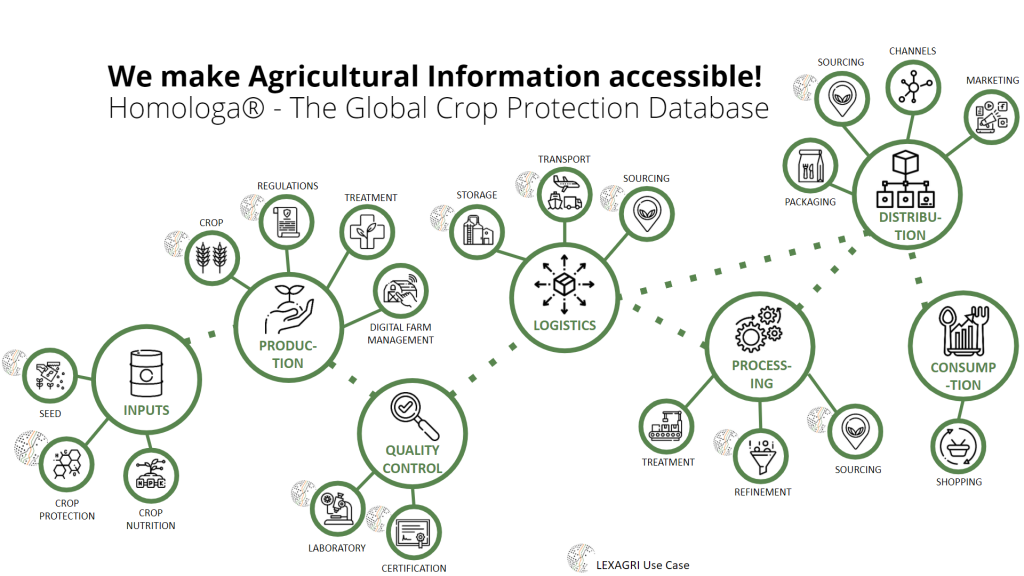
Actors in the food chain are committed to food quality and safety – and need to assure the reliability of all suppliers. A food chain traceability standard helps map and document a product’s history, creating trust and confidence toward consumers. To achieve this, reliable reference datasets need to be available at critical points of the Food Value Chain.
- The farm-to-fork strategy of the EU plays a key role in achieving three of the main EU Green Deal objectives:
- Secure the sustainable food production
- fight climate change and
- protect the environment and biodiversity.
To demonstrate the contribution to the achievement of these goals, players in the food chain are more and more keen to provide proof of the products integrity. A consistent and uninterrupted product history record allows all parties right down to the consumer to trace the origin, treatment and factory conditions. A proper traceability system can help create a feedback loop to improve product quality, conditions and delivery, optimizing related costs. It also helps provide transparency in distribution routes and improve supply chain efficiency and trading partner collaboration.
Is there a current standard?
Traceability is a key item both in food legislation (e.g. EU Reg. 178/2002) and in the food safety standards (e.g. ISO 22000). The International Organization for Standardization (ISO) provides this technical standard to enable a harmonized approach to traceability systems in accordance with the available best practices. The standard for traceability in the feed and food chain, ISO 22005, provides general principles and basic requirements for system design and implementation.
Apart from the international standards there are numerous private standards out there. The individual requirements are hard to track and a dedicated database provides an adequate solution to take the work off your hands. Having the complete and correct information at the right time makes it easy to include in records.
Complying with requirements of private standards
A couple of questions help to understand, where which data needs to be recorded in order to achieve traceability of a product:
- What information do provider, growers or suppliers have to deliver (origin, growing conditions, treatments, residues etc.)?
- What information needs to be recorded during the processing history (logistics, transportation conditions, factory conditions etc.)?
- What information should be provided to the customers and consumers?
In order to be able to collect this information, it is paramount to provide contextual datasets at the correct stage of the food chain. If a farmer does not know which chemical substances a crop protection agent contains he will not be able to provide reliable information to a food traceability system. The integration of a curated, regularly updated regulatory information source is therefore indispensable. The highest possible degree of automatic inclusion of this information can be achieved by embedding reference data sources in the everyday operational tools along the food chain.

